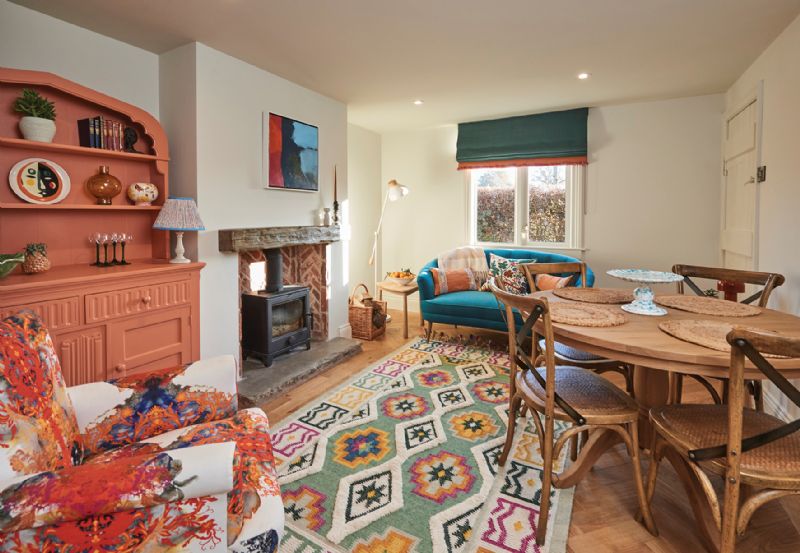- Home
- News, Articles & Reviews
We are hiring! Please click here to join our growing magazine delivery team in Gloucestershire!
Areas
Homes & Gardens
Archive

How to mix colours and patterns
All Areas > Homes & Gardens > Interior Design
Author: Lindsey Higgins, Posted: Friday, 22nd August 2025, 09:00
People can often be afraid to mix colour and patterns in a room and worry that it will look either disjointed or too busy. If you look at images of beautifully styled rooms for inspiration, you will see that they have a mix of colour and pattern, working together to give a lovely cohesive look and feel to the room.
Mastering the art of mixing colour and pattern well will transform your rooms from flat and bland, to rooms full of character, individuality and style. There are some basic principles you can use to guide you, and then it’s about being bold and not worrying too much. An easy way to test if things are working well together is to add them to a mood board, either digital or physical.
Choose a palette with a few key colours
Choose a colour palette for your room with two or three key colours. These may come from a piece of furniture, the decorative scheme, or a large rug, and can guide your choices for the patterns you want to introduce. Also, having at least one common colour in all the patterns will unify them and create a sense of harmony.
Distribute patterns throughout a room
Consider what is the main focal point of your room. Is it curtains, or a bold patterned sofa? Whatever it is, balance that with the other areas of the room; add in some pattern on the other side of the room, using a contrasting scale or print. If you have a large floral sofa, you may want to look for a smaller print that tones well for the curtains. The patterns should be distributed throughout the room, on fabrics, rugs, artwork, soft furnishings and accessories. This will give a really cohesive feel.
Don’t cause your patterned pieces to fight. Mix the scale of the pattern, such as a large-scale floral paired with a stripe, geometric, or small print. Your colours can move between the patterns you have chosen, but remember that you’re trying to mix and not match colours exactly. This will make the scheme more original and interesting. Try to blend varying shades of your chosen colour rather than matching them exactly.
Experiment with combinations
Don’t be afraid to experiment and put unexpected combinations together. Then stand back and observe from a distance. Taking a photograph and looking at a room through a camera lens is also a good way to sense check a scheme. It can show whether there is too much going on in the room, or not enough and something needs to be added.
When done well, mixing colour and pattern adds depth, visual interest and energy to a room.Other Images
Copyright © 2025 The Local Answer Limited.
Unauthorized use and/or duplication of this material without express and written permission from this site's author and/or owner is strictly prohibited. Excerpts and links may be used, provided that full and clear credit is given to The Local Answer Limited and thelocalanswer.co.uk with appropriate and specific direction to the original content.More articles you may be interested in...


© 2025 The Local Answer Limited - Registered in England and Wales - Company No. 06929408
Unit H, Churchill Industrial Estate, Churchill Road, Leckhampton, Cheltenham, GL53 7EG - VAT Registration No. 975613000You are leaving the TLA website...
You are now leaving the TLA website and are going to a website that is not operated by us. The Local Answer are not responsible for the content or availability of linked sites, and cannot accept liability if the linked site has been compromised and contains unsuitable images or other content. If you wish to proceed, please click the "Continue" button below:




